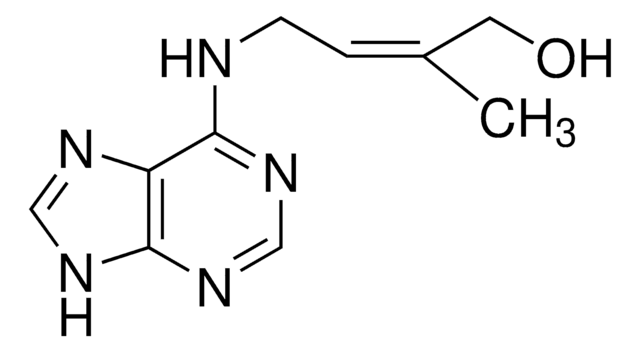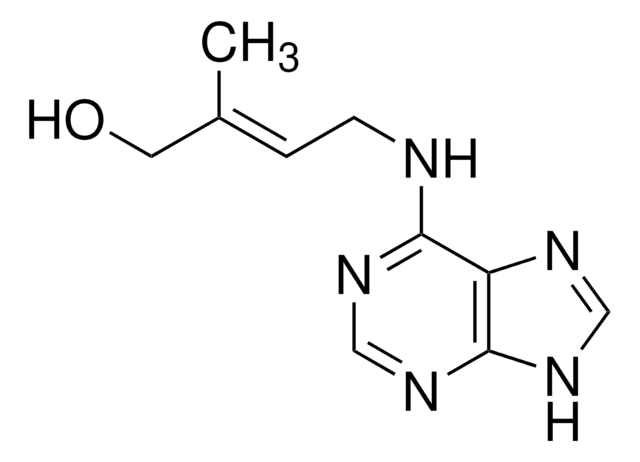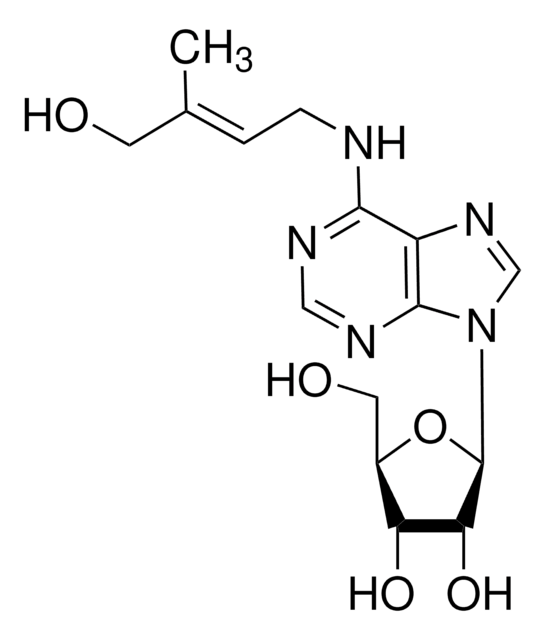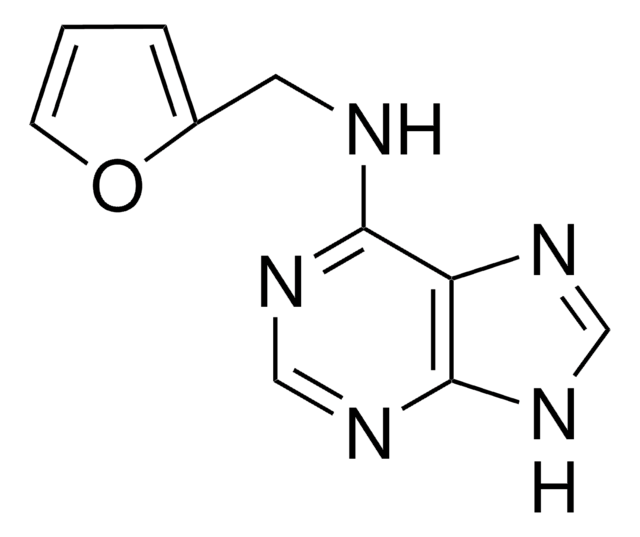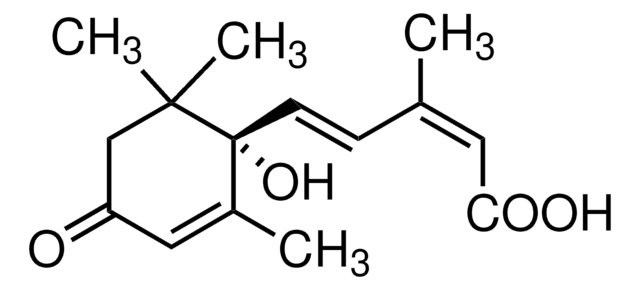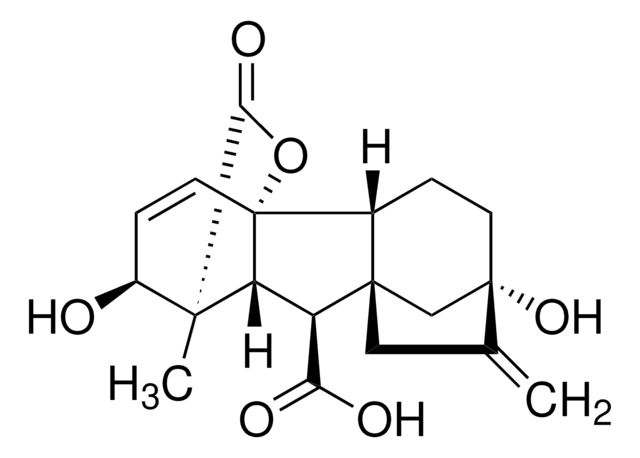All Photos(1)
About This Item
Empirical Formula (Hill Notation):
C10H15N5O
CAS Number:
Molecular Weight:
221.26
Beilstein:
1215977
MDL number:
UNSPSC Code:
12352202
PubChem Substance ID:
NACRES:
NA.32
Recommended Products
Assay
≥98.0% (HPLC)
storage temp.
2-8°C
SMILES string
CC(CO)CCNc1ncnc2nc[nH]c12
InChI
1S/C10H15N5O/c1-7(4-16)2-3-11-9-8-10(13-5-12-8)15-6-14-9/h5-7,16H,2-4H2,1H3,(H2,11,12,13,14,15)
InChI key
XXFACTAYGKKOQB-UHFFFAOYSA-N
Looking for similar products? Visit Product Comparison Guide
Biochem/physiol Actions
DL-Dihydrozeatin can be converted into zeatin by the enzyme zeatin reductase. It has been identified as a plant growth cytokinin that stimulates flower bud formation.
Metabolite in zeatin biosynthesis, metabolism in radish seedlings, conversion of Zeatin to Dihydrozeatin in Phaseolus Embryos.
Packaging
Bottomless glass bottle. Contents are inside inserted fused cone.
Certificates of Analysis (COA)
Search for Certificates of Analysis (COA) by entering the products Lot/Batch Number. Lot and Batch Numbers can be found on a product’s label following the words ‘Lot’ or ‘Batch’.
Already Own This Product?
Find documentation for the products that you have recently purchased in the Document Library.
An Enzyme Mediating the Conversion of Zeatin to Dihydrozeatin in Phaseolus Embryos
Martin, R.
Plant Physiology, 89, 1630-1635 (1990)
Rohit Joshi et al.
Plant, cell & environment, 41(5), 936-946 (2017-03-25)
Cytokinins play a significant role in determining grain yield in plants. Cytokinin oxidases catalyse irreversible degradation of cytokinins and hence modulate cellular cytokinin levels. Here, we studied the role of an inflorescence meristem-specific rice cytokinin oxidase - OsCKX2 - in
R C Martin et al.
Plant physiology, 90(4), 1630-1635 (1989-08-01)
A reductase catalyzing the conversion of zeatin to dihydrozeatin was detected in soluble fractions of immature Phaseolus vulgaris embryos. The enzyme was partially purified by ammonium sulfate fractionation and affinity, gel filtration, and anion exchange chromatography. NADPH was the only
W M Van der Krieken et al.
Plant physiology, 92(3), 565-569 (1990-03-01)
Explants from flower stalks of Nicotiana tabacum L. were cultured on different cytokinins to induce flower bud formation. All cytokinins tested except zeatin and zeatin-riboside induced the same maximal number of flower buds. Benzyladenine, benzyladenosine, and dihydrozeatin were the most
Dihydrozeatin metabolism in radish seedlings.
McGaw, B. A.
Phytochemistry, 23, 1373-1377 (1984)
Our team of scientists has experience in all areas of research including Life Science, Material Science, Chemical Synthesis, Chromatography, Analytical and many others.
Contact Technical Service